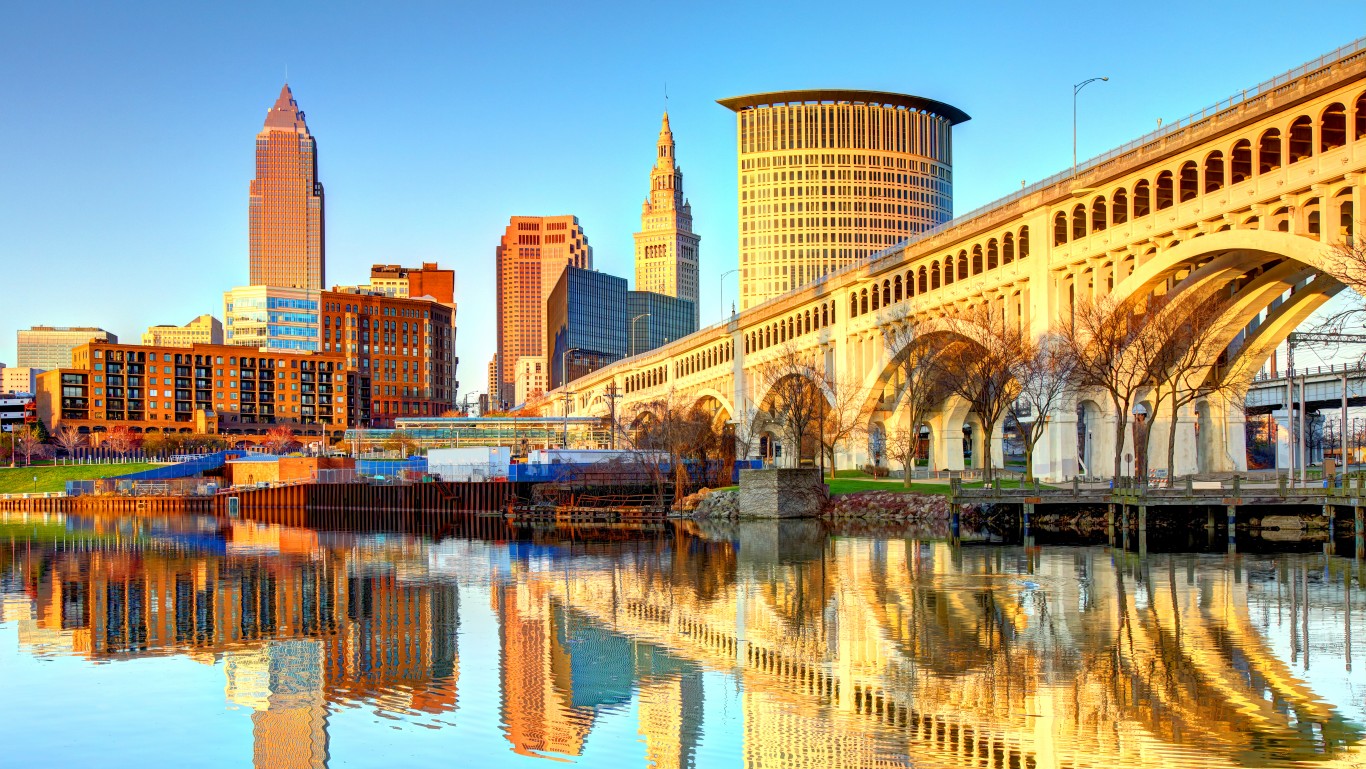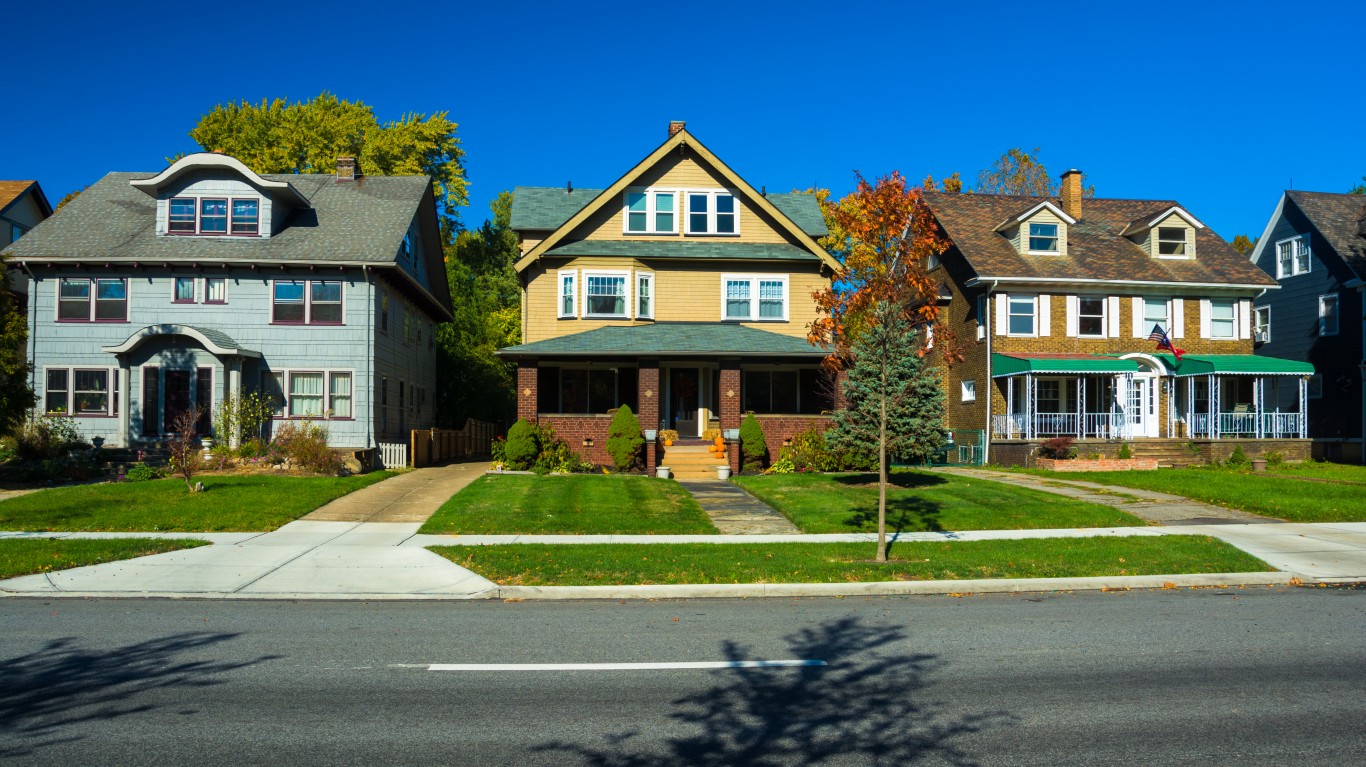
Some cities and states have declined to the extent that they have become poor places for people to live. These areas usually have a shrinking population, high poverty rates, faltering services, poor school systems, and troubling crime rates. Among these is Cleveland, which has been in decline for decades.
MSN recently named Cleveland as “Once-Powerful Cities That Now Struggle To Survive.” The authors noted, “Some vanish abruptly, but others see their initial break-neck momentum peter out into a long, slow decline.” Cleveland falls into the second category.
The decline of the railroad and steel industries started to hit Cleveland in the 1960s. The city defaulted on some of its financial obligations in 1978. Cleveland’s population peaked at 919,800, according to the 1950 Census. By 2021, that figure dropped to 367,991.
According to the Census, the number of people who live in poverty in Cleveland is 31.4%. The median household income is $33,678, which is about half the national average.
According to US News, the violent crime rate in Cleveland is higher than the national average. The same holds true for property crime. The violent crime per 100,000 people was 421.3 in 2020. That compares to 256.3 in New York City.
According to Public School Review, the education results in Cleveland public schools are terrible. Average math proficiency is 25%, compared to an Ohio state average of 50%. The school reading proficiency score is 37%, compared to a state average of 57%.
Great School reports that 73% of the schools in Cleveland received a below-average rating. Only 2% are rated above average.
No cities in the country with Cleveland problems have been turned around. Cleveland would need to substantially change the population trend, crime, poverty, and school systems to do so. If anything, the best that can happen is that the situation will stabilize.
In 20 Years, I Haven’t Seen A Cash Back Card This Good
After two decades of reviewing financial products I haven’t seen anything like this. Credit card companies are at war, handing out free rewards and benefits to win the best customers.
A good cash back card can be worth thousands of dollars a year in free money, not to mention other perks like travel, insurance, and access to fancy lounges.
Our top pick today pays up to 5% cash back, a $200 bonus on top, and $0 annual fee. Click here to apply before they stop offering rewards this generous.
Flywheel Publishing has partnered with CardRatings for our coverage of credit card products. Flywheel Publishing and CardRatings may receive a commission from card issuers.
Thank you for reading! Have some feedback for us?
Contact the 24/7 Wall St. editorial team.




